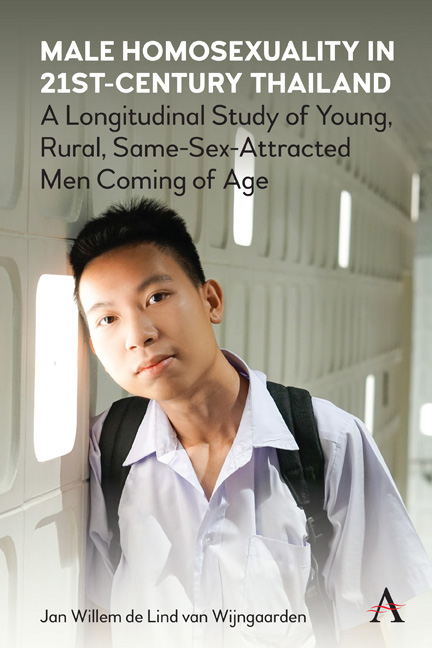 Male Homosexuality in 21st-Century Thailand
Male Homosexuality in 21st-Century Thailand Book contents
- Frontmatter
- Dedication
- Contents
- Preface
- 1 Introduction
- 2 Introducing the Research Participants
- 3 Understanding Thai Personhood
- 4 Homosexuality: A Matter of Karma?
- 5 In the Beginning … Exploring Early Awareness of Being Different
- 6 The Important Role of Gender in Understanding Homosexuality in Thailand
- 7 ‘All in the Family’: Tactics for Living and Growing Up in a Heteronormative World
- 8 How Dating Friends Plays a Role in Destabilizing Gender-Based Notions of Homosexuality
- 9 The Role of the Internet in Learning about and Experimenting with New Sexual Identities
- 10 ‘No Money, No Honey’: Love and Sex in Pursuit of a Better Life
- 11 Conclusions and Implications for HIV Service Provision and Sexuality Education
- Appendix: Glossary of Thai Terms Used in this Book
- References
- Index
6 - The Important Role of Gender in Understanding Homosexuality in Thailand
Published online by Cambridge University Press: 23 March 2021
- Frontmatter
- Dedication
- Contents
- Preface
- 1 Introduction
- 2 Introducing the Research Participants
- 3 Understanding Thai Personhood
- 4 Homosexuality: A Matter of Karma?
- 5 In the Beginning … Exploring Early Awareness of Being Different
- 6 The Important Role of Gender in Understanding Homosexuality in Thailand
- 7 ‘All in the Family’: Tactics for Living and Growing Up in a Heteronormative World
- 8 How Dating Friends Plays a Role in Destabilizing Gender-Based Notions of Homosexuality
- 9 The Role of the Internet in Learning about and Experimenting with New Sexual Identities
- 10 ‘No Money, No Honey’: Love and Sex in Pursuit of a Better Life
- 11 Conclusions and Implications for HIV Service Provision and Sexuality Education
- Appendix: Glossary of Thai Terms Used in this Book
- References
- Index
Summary
This chapter focuses on the importance of gender in how the young men in the study explained their sexuality and their early sexual experiences. Gender is defined here simply as common (some might say ‘stereotypical’) notions about masculinity and femininity that exist and are learned and taught in a society.
The first part of the chapter will briefly summarize some of the studies on gender and sexuality that have been conducted in Thailand. After this I will describe how the young men in this study used stereotypical notions of femininity and masculinity to frame and interpret their early romantic experiences and expectations, and discuss the implications of this.
Gender and Sexuality in Thailand
The Australian historian and Thai scholar Peter A. Jackson (2000) remarked that there are no separate words for ‘gender’, ‘sex’ or ‘sexuality’ in the Thai language. All three terms are denoted by the term phet. The word phet therefore sometimes refers to the English term gender, sometimes to sex and sometimes to sexuality, and sometimes to something in between. This linguistic fact indicates how important gender is for understanding sexuality in Thailand, and suggests that it may be difficult to draw clear boundaries between genders and sexualities. The American anthropologist Penny Van Esterik (2000, 202) noted that considerable flexibility and fluidity exists in how gender is expressed and lived in Thailand, even within the same individual over time:
Thai gender can best be represented as a continuum with permeable boundaries, a system that is in essence non-binary but in conventional language provides conceptual space for a third gender […] what is stressed in the Thai system is the ability of people to move in and out of the categories. It is the Thai sensitivity to context – expressed as kalatesa, knowing how time, locations and relationships intersect to create appropriate contexts – that allows for the flow of multiple gender identities.
Morris (1994) argues that Thailand has three distinct genders: the man (phu chaai), woman (phu ying) and the third gender kathoey. The sexualities of the male and female genders are considered to be fundamentally different in Thai sexual culture, with ‘normal’ women being considered to have fewer sexual urges than men and being more in control of them.
- Type
- Chapter
- Information
- Male Homosexuality in 21st-Century ThailandA Longitudinal Study of Young, Rural, Same-Sex-Attracted Men Coming of Age, pp. 55 - 74Publisher: Anthem PressPrint publication year: 2021


